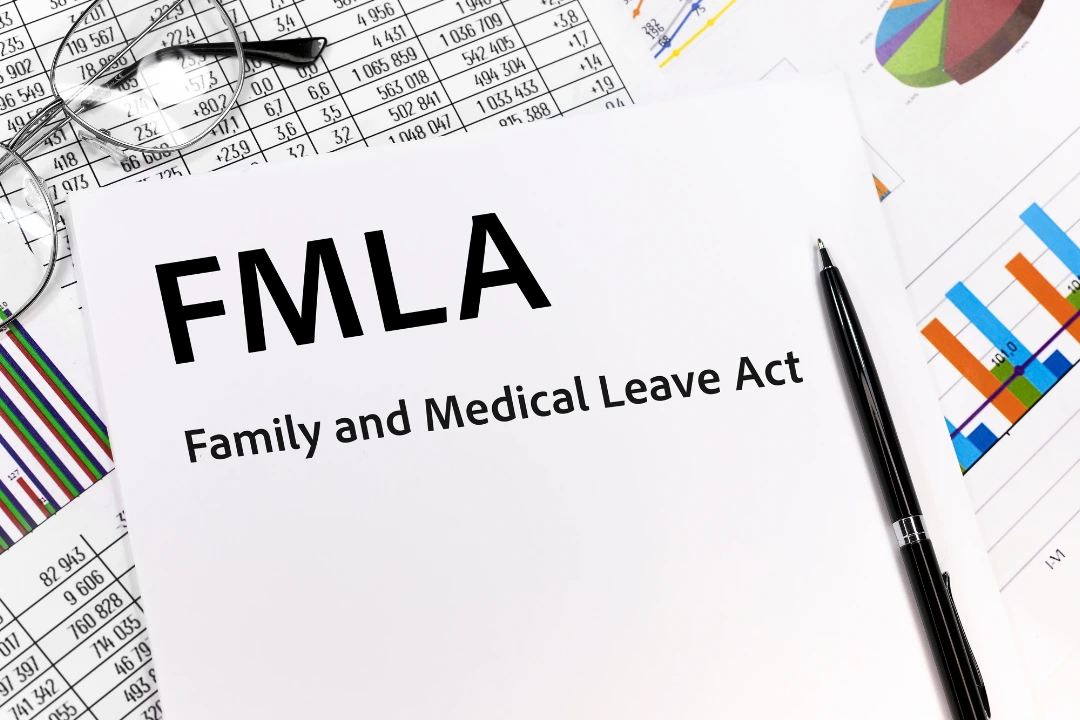This year marks the 30th anniversary of the Family and Medical Leave Act (FMLA). Since it was established in 1993, the FMLA s allowed working Americans to take a guaranteed 12 weeks of unpaid leave for the following reasons without fearing they’ll lose their job as a result:
- Recovery from an illness
- Care for a family member under specific circumstances
- Maternity leave
It’s important to note that typically employees are required to submit a request for FMLA leave in advance, prior to taking any FMLA-related time off.
Does your business qualify for FMLA-related time off?
FMLA stipulations only apply to businesses with an employee count of 50 and over. This means employees working at very small businesses often don’t qualify for FMLA leave. If your business satisfies the size requirement, has employees who’ve worked within a 75-mile radius and said employees have worked for you for a minimum of 20 workweeks over the course of the current or previous calendar year, then you’ll qualify as an employer that can offer FMLA leave.
Employee & Employer Requirements
FMLA requests must be made no less than 30 days in advance of the employee’s intended first day of leave. The 30-day notice is the minimum requirement, but it’s best practice to notify your employer as early as possible so they can make the necessary preparations. Once the request has been made, employees are further required to submit medical documentation related to their FMLA leave request to their employer within 15 days from the start of their leave.
Employers also have requirements to meet. An employer must notify the employee requesting FMLA leave about the status of their request within 5 business days. In the event the employer denies the employee’s request, the employer is required to provide the employee with a valid explanation for the denial, indicating the reason(s) why the request was not approved.
Key FMLA Factors to Keep in Mind
Employees may use their FMLA leave all at once or in increments. The decision on whether the FMLA leave is taken continuously or intermittently depends on the employer’s needs and the specifics of the need for FMLA leave. The FMLA grants employees the option to take their leave in either 12- or 26-week increments within a 12-month period. However, the ultimate decision rests with the employers who have the authority to determine their preference.
Many employers include stipulations/preferences that the FMLA leave is taken on a rolling basis in order to avoid a 12-week leave at the end of December followed by 12 more weeks at the beginning of January.
What About Small Business and Part-time Employees?
Some small businesses have fluctuating workforces that can drop below 50 employees at times. As long as the business has employed at least 50 employees for 20 weeks in the current or previous year, the business will still qualify for FMLA coverage.
When it comes to part-time employees, they can receive up to 12 weeks’ of unpaid leave for both family reasons and medical purposes as long as they’ve worked at least 1,250 hours, not including paid nor unpaid time taken in the previous 12 months.
In other words, part-time employees can qualify for FMLA leave if they work approximately 24 hours per week over a 52-week period. While FMLA leave is unpaid, employers are required to continue providing the same group health care benefits that were in place prior to employees’ FMLA leave. Additionally, upon the conclusion of the leave, employers must reinstate the employee either in the same position they held previously or in an equivalent role.
FMLA leave, like intermittent leave, can be taken in separate and multiple blocks of time. However, two primary criteria must be met: The employee is requesting FMLA leave for a medical reason or to focus on a “serious condition.”
New regulations were put into place back in 2009 defining a serious condition is as three consecutive days’ worth of incapacity in addition to two visits to a health care provider. These two visits must have taken place within 30 days of the incident that caused the serious condition.
The Flipside of FMLA
Although FMLA leave is valued by many working Americans, workers who cannot afford to take unpaid time off work are at a disadvantage. Countless other workers who either don’t qualify for FMLA leave or cannot take unpaid leave for financial reasons don’t yield many benefits from FMLA leave. An upward of millions of employees refuse to take FMLA leave even if desire to, simply because they can’t afford the unpaid leave.
It’s worth noting that many states in the U.S. offer paid family leave programs that allow employees to take time off from work for qualifying reasons. The federal government doesn’t control state-regulated programs such as these controlled nor are they part of the federal FMLA program.
Explore your state’s options and review the requirements to see whether paid family leave or paid medical leave is available to you. It’s important to protect yourself and ensure your options are in compliance with the FMLA. Professionals can help you navigate any potential legal consequences that may arise and provide valuable insights into how the FMLA applies to your particular circumstances.





